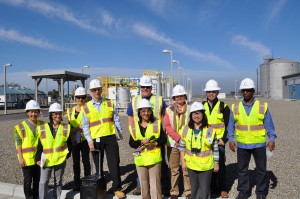記者/何思倫
加州目前正面臨史上最嚴重的乾旱,乾旱時長和程度都創下紀錄。今年1月17日,州長宣佈實施Drought State of Emergency,要求地方水務機構實施缺水應急計畫。1月28日,Santa Clara Valley Water District 決定用水形勢升級為 “Stage 2: Alert”-這代表我們沒有獲得預期的250,000-300,000 英畝-英尺降雨,並建議用戶減少用水10%。
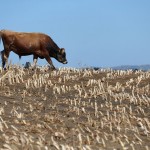


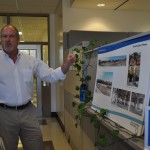

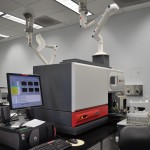
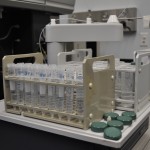
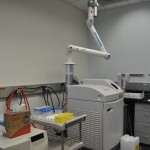
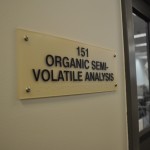
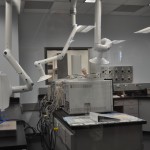
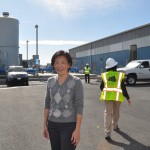
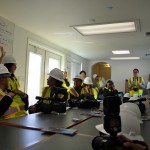
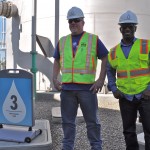
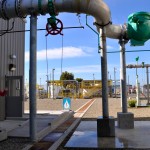

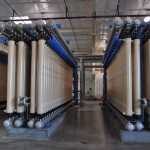
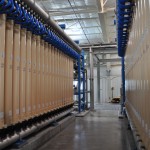
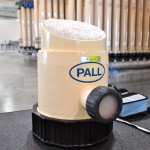
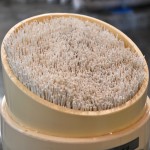
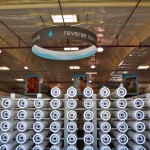
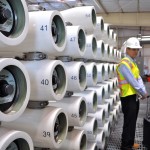
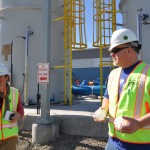
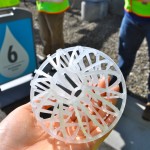
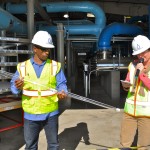
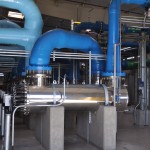
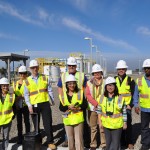
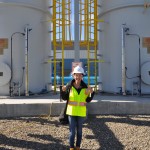


Santa Clara Valley Water District管理一個綜合性水資源系統,有三個主要目標:
· 向縣180萬居民提供安全、清潔、可靠的水;
· 為住宅、商家、學校和道路提供防洪;
· 通過提高水道和野生動物棲息地的品質恢復、維護河流健康和生態系統。
Santa Clara Valley Water District管理和服務
· 15 個城市:Campbell、Cupertino、Gilroy、Los Altos、Los Altos Hills、Los Gatos、Milpitas、Monte Sereno、Morgan Hill、Mountain View、Palo Alto、San Jose、Santa Cara、Saratoga和 Sunnyvale
· 10個水壩和地表水水庫、3個處理廠、3個抽水站
· 275 英里河流,143英里管道
· 地方城市和私營供水零售商提供供水和地下水批發管理服務。
為了履行職責,Santa Clara Valley Water District 還必須確保供水和水壩免受地震和自然災害的破壞,防止水道中出現有毒、有危害和有污染物質。2008年,水務管理區啟動最先進的Water Quality Lab(水質實驗室), 配備專業技術,檢測分析和清除有毒和污染物質,製造安全飲用水。實驗室所進行所有檢測受到監控,以符合嚴苛的州和聯邦安全要求。 Water Quality Lab承擔跟蹤和維護河流、水庫和盆地地下水的安全飲用標準以及迴圈水的品質的重任。
多年以來,在最寶貴卻又最不受重視的資源-水上,加州經歷了起起伏伏。19世紀20年代,隨著農業的興旺發展造成地下水的迅速枯竭,加州人第一次感受到乾旱所帶來的壓力。他們開始興建水庫和水壩來解決水短缺的問題,並且開始開發基本的節水和補水方法。19世紀50年代和60年代,工業化和社會的飛速發展造成更具毀滅性的水短缺。為了解決這一問題,縣開始從Sierra Nevada引入水源。直到目前,這仍然是本縣人口依賴的主要水源之一。
Santa Clara縣用水來源分解如下:
· 30%- 當地水,來自流入水庫、池塘和河流的地下水和降雨;
· 55%- 外引水,主要來自 Sierra Nevada和Sacramento-San Joaquin River Delta;
· 5%- 迴圈水,目前所占比例最小,但重要性和實際應用卻日見提高。它對於一個擺脫乾旱的水系統很重要;
· 10%- 通過減少使用量而節省下來的水。
隨著乾旱以不斷惡化的狀態進入2014年,我們無法繼續依賴與過去相同的補水方式。繼續將外引水作為主要來源不是現實的或可持續的解決方案。單單節水本身的效率不足以保證供水的充足。2012-2013年,Santa Clara County 使用了大約362,700 英畝-英尺水。 截止2月1日,降雨只有平均量的21% (1.61英寸), 地方水庫儲水53,617英畝-英尺 (總庫容的32%)以及水庫儲水量只有平均值39-54%。要想達到正常的降雨量,San Jose市需要七倍的降雨量。
前Santa Clara Valley Water District 理事 Nai Hseuh解釋說,Sacramento-San Joaquin Delta的健康和狀況因為多年管理不善和人口增長造成的水源枯竭而不斷惡化。目前最大的問題是如何創造出供水、水處理和管理的是可持續性方法,實現不再外引更多水進入本地區的目的。說到這一點,就必須提一下 Santa Clara Valley Water District已經完成建設、將在2014年春季開放的Silicon Valley Water Purification Plant。
Silicon Valley Water Purification Plant是北加州最大的先進淨水中心。它旨在提高清潔系統、純淨和提高迴圈水/已處理廢水的品質。此淨水廠是一個防乾旱水處理系統,有三個主要步驟:
· 微過濾:已處理水流過由數千個中空纖維組成的過濾膜組件,去除水中所含的固體物、細菌、一些病毒和更大顆粒的污染物。每根纖維直徑為0.1 micron, 只有人類頭髮的300分之一細。
· 反滲透:水在高壓下通過薄膜;這些薄膜有非常微小的洞,只能讓水分子通過。鹽、病毒和來自個人護理產品和殺蟲劑的污染物在這一環節被去除。
· 紫外線: 作為一個附加安全舉措,水在釋放紫外線的容器中進行消毒,清除任何殘餘病毒或有機化合物,讓水保持高品質。
已處理水經過這些步驟後被送往最後的儲藏罐,添加氯胺。來自Silicon Valley Purification Center 的水被送往迴圈水廠進行混合以提高這些水廠的水質。Purification Center的宗旨是使用防乾旱系統提高迴圈水品質、增加對已有迴圈水的使用,使得它能夠適用於更多用途(並有可能擴大矽谷飲用水的供應)。
今天,Santa Clara Valley Water District 繼續處理、外引和節約用水以滿足用水滿足日常用水需求。但是,氣候變化、反復發生的乾旱、污染和人口的增加正在加大滿足用水需求的壓力。重要的是,將加大節水力度和運用現有方法結合使用、推廣迴圈水做法以提供足夠的清潔用水。因此,作為負責任的公民,我們應當為長期可持續性供水問題的解決行動起來,節約用水,充分意識到水處理和環境問題。為了確保矽谷的生活品質,Santa Clara Valley Water District正在解決水問題的辦法不僅有助於抵抗現有的乾旱,而且未雨綢繆,致力於實現一個沒有乾旱的未來。
————————————————
Santa Clara Valley Water District Fights Drought with Sustainable Water Purification Center
Reported by: Jocelyn Ho
California is currently suffering one its worst droughts in history with record-setting levels of dry spells and parched weather. On January 17th of this year, the Governor declared a Drought State of Emergency as local water agencies were asked to implement their water shortage contingency plans. On January 28th, it was decided by the Santa Clara Valley Water District council that the water situation has escalated to “Stage 2: Alert”, meaning we have not received the expected 250,000-300,000 acre-feet of rainfall, and recommended water usage reduction is at 10%.
The Santa Clara Valley Water District manages an integrated water resources system that has 3 main objectives:
- Providing safe, clean, reliable water to the County’s 1.8 million residents,
- Providing natural flood protection to homes, businesses, schools, and roads,
- Restoring, maintaining and nourishing healthy creeks and ecosystems by enhancing the quality of waterways and wildlife habitats.
The district manages and serves:
- 15 cities: including Campbell, Cupertino, Gilroy, Los Altos, Los Altos Hills, Los Gatos, Milpitas, Monte Sereno, Morgan Hill, Mountain View, Palo Alto, San Jose, Santa Cara, Saratoga, and Sunnyvale.
- 10 dams and surface water reservoirs, 3 treatment plants, 3 pumping plants,
- 275 miles of streams, 143 miles of pipelines,
- Local municipalities and private water retailers who deliver drinking water directly to homes and businesses in the county.
In order to perform these duties, the Santa Clara Valley Water District must also ensure that its water supply and local dams must be protected from the potential impacts of earthquakes and natural disasters, as well as toxins, hazards and contaminants in their waterways. In 2008, the water district opened its most advanced Water Quality Lab, which houses special technologies that detect, analyze and remove toxins and pollutants to create safe drinking water. All tests performed in the lab are constantly monitored to meet strict state and federal approved safety requirements. The Water Quality Lab is responsible for tracking and maintaining safe drinking standards of groundwater in creeks, reservoirs, and basins, as well as the quality of recycled water in the county.
Over the years California has experienced ups and downs in the supply and demand for our most valuable, yet underappreciated, resource—water. In the 1920’s Californians felt their first struggle with drought after groundwater supplies were rapidly depleted by the booming agriculture industry. Reservoirs and dams were built to accommodate water shortage, and basic water conservation and replenishment methods were developed. In the 1950’s and 60’s, skyrocketing growth in industrialization and societal development caused an even more devastating water shortage. To cope, the county began to import water from the Sierra Nevada, which remains to be one of the main water resources the population relies on today.
Santa Clara County’s water supply is obtained from these sources:
- 30%- Local water from groundwater and rainfall, which flow into reservoirs, percolation ponds and creeks.
- 55%- Imported water mainly from Sierra Nevada and the Sacramento-San Joaquin River Delta.
- 5%- Recycled water is currently the smallest source, but is growing in importance and practice, and is critical to the drought-free water system
- 10%- water conservation by reducing usage
As the drought situation worsens into 2014, we cannot continue to rely on the same methods of replenishment as in the past. It is not a realistic or sustainable solution to continue importing water into the region as a main source, and water conservation alone is not efficient enough to maintain sufficient water supplies. Santa Clara County used approximately 362,700 acre-feet of water in 2012-2013. As of February 1, the county only received 21% of average total rainfall (1.61 inches), holds 53,617 acre-feet of local reservoir water in storage (32% of total capacity) and has reservoir storage levels at 39-54% of the average. The city of San Jose would need seven times as much rainfall as what we’ve actually had to reach normal levels.
Former Santa Clara Valley Water District Board of Directors Nai Hseuh explained that health and condition of the Sacramento-San Joaquin Delta has deteriorated over years of manipulation and resource depletion by our growing population. The biggest concern now is creating sustainable methods of water supply, treatment, and management without requiring more water to be imported into the area. In comes the Santa Clara Valley Water District’s Silicon Valley Water Purification Plant, which has finished construction and is set to open in Spring 2014.
The Silicon Valley Water Purification Plant is the largest advanced water purification center in Northern California. It is designed to purify and enhance the cleaning system and quality of recycled and treated waste water. This Purification Plant is a “drought-proof” water treatment system with 3 main steps:
- Microfiltration: treated wastewater flows through filtration membrane modules made up of thousands of hollow fibers, which removes solids, bacteria, some viruses and larger contaminants. Each fiber is 0.1 micron, or 1/300th of a single human hair.
- Reverse Osmosis: water is forced under high pressure through membrane sheets with holes so small that only water molecules can pass through. Salts, viruses, and contaminants from personal care products and pesticides are removed.
- Ultraviolet Light: as an additional safety measure, water is disinfected in chambers that emit strong ultraviolet light to eliminate any remaining viruses or organic compounds, leaving water of an extremely high quality.
After the treated water goes through all these steps, it is sent to a final storage tank where chloramine is added. Water from the Silicon Valley Purification Center is sent to recycled water plants where it is blended in to enhance the water quality at those facilities. The mission of the Purification Center is to use the “drought-proof” system to increase use of existing recycled water by enhancing the quality of recycled water, enabling it to be used for a greater variety of purposes (and potentially expanding Silicon Valley’s drinking water supplies).
Today, the Santa Clara Valley Water District continues to treat, import, and conserve water to meet our daily water needs. However, climate change, recurring droughts, pollution, and a growing population are increasing the pressure to meet water demands. It is crucial to combine existing methods with increased water conservation, and to expand the recycled water practice to provide enough clean water to current and future generations. Therefore, as responsible citizens we should act for long-term sustainable water solutions by conserving water usage and being conscious of our waste disposal and environment. To guarantee the livelihood of the Silicon Valley, Santa Clara Valley Water District is tackling the water issue with methods that help the current drought and also set us up for a more environmentally sustainable future with secure water supply.


















